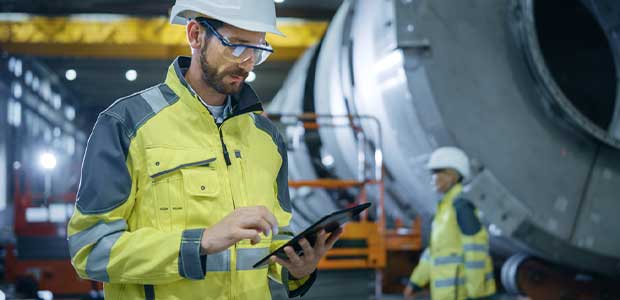
Modern Technology Results in Improved Workplace Safety
The use of technology will continue to play a role in the improvement of workplace safety.
- By Dr. Kevan Orvitz
- Oct 03, 2022
Instead of policy reform, improvements in workplace health and safety are frequently the result of technological advancement. Even in hazardous workplaces, technological improvements may help improve workplace safety. Consider the construction business, for example. These individuals are engaged in seemingly endless, demanding physical activity. The same goes for mining, manufacturing and transportation industries. Each of these vocations requires workers to be in close proximity to heavy machinery, work with hazardous chemicals and lift large loads, all while working on their feet for hours on end.
Utilizing technological advancements can help to improve workplace safety in these potentially hazardous environments. Safety managers have a moral responsibility to seek out technology driven ergonomic solutions to make their workforce safer.
Some technological advancements that help improve workplace safety are:
PPE. This is equipment worn by workers to protect themselves from potential hazards in the workplace. Common examples of PPE include gloves, goggles, hard hats, and earplugs.
Machine Guards. These are physical barriers that are placed on or around machinery to protect workers from being injured by moving parts.
Automation. This is the use of machines to perform tasks that would otherwise be completed by human workers. Automation can help to improve workplace safety by reducing the number of human workers who are exposed to potential hazards.
Safety Training. This is training that helps workers learn about potential hazards in the workplace and how to best avoid them. Safety training can be delivered through classroom instruction, online courses or video presentations.
Technology has also played a role in the development of new safety standards. For example, OSHA was established in 1971 in response to the increasing number of work-related injuries and fatalities. OSHA establishes and enforces safety standards in the workplace. These standards are designed to protect workers from potential hazards, such as exposure to harmful chemicals or being struck by a falling object.
The use of technology has also helped to improve the effectiveness of safety inspections. Safety inspectors now have access to tools, such as infrared cameras and drones, that help them to identify potential hazards in the workplace. These tools allow inspectors to identify hazards that would otherwise be difficult to see.
This article originally appeared in the October 1, 2022 issue of Occupational Health & Safety.